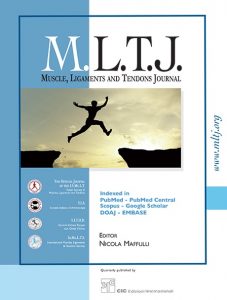Publications

Quantitative Weight Bearing and non-weight Bearing Measures of Stiffness in the Achilles Tendon and Gastrocnemius Muscle
Authors: G.Ericson Morgan 1, R.Martin 2, H.Welch 2, K.Morris 3
Affiliations:
- Orthopaedics, Prince Charles Hospital, Merthyr Tudful, Wales, United Kingdom
- Cwm Taf University Health Board, United Kingdom
- Cardiff School of Health Sciences, Cardiff Metropolitan University, United Kingdom
Journal: Muscle, Ligaments and Tendons Journal - Vol.10, No.1, January-March 2020 (DOI: 10.32098/mltj.01.2020.14)
-
Field & Applications:
- Normatives
Objectives: To establish quantitative values of stiffness for the Achilles tendon (AT) and Gastrocnemius muscle (GM) in participants weight bearing and non-weight bearing.
Methods: Measurements of 25 participants taken bilaterally at 8 points along the AT, and 2 points at the GM included: Natural Oscillation frequency (F), dynamic stiffness (S), mechanical stress relaxation time (R), logarithmic decrement (D) and creep (C) were taken non-weight bearing (NWB) and weight bearing (WB) using the MyotonPRO.
Results: Median WB F scores were significantly higher than NWB F scores. D was significantly (P<0.005) higher NWB than WB for both AT and GM. S decreased from point 1 to point 8. GM S measurements were significantly (P<0.005) higher WB to NWB. C increased along course of tendon in the NWB condition and was significantly (P<0.005) higher at the GM. R was significantly (P<0.005) higher in the NWB condition for the AT and GM. R incrementally increased along the course of the AT in both NWB and WB conditions.
Conclusions: There was an overall increased stiffness of the AT and GM during the weight bearing condition compared to the non-weightbearing condition. Further studies are required to develop a robust clinical application of this technology.
Keywords: Achilles, gastrocnemius, soleus, sports medicine, stiffness.
This present study demonstrated significant differences between the weight bearing (WB) and non-weight bearing (NWB) conditions for both Achilles tendon and gastrocnemius muscle. These data suggest that stiffness is higher in the Achilles tendon and Gastrocnemius muscle during WB conditions with stiffness gradually decreasing along the course of the tendon from point 1 to point 8 from its insertion at the calcaneus to the muscle-tendinous junction. In the NWB condition there was an increase in viscoelasticity along the course of the tendon and overall increased viscoelasticity compared to WB. Achilles tendon and Gastrocnemius muscle elasticity was higher in the WB condition, with Achilles tendon elasticity decreasing along its course from its insertion at the calcaneus to its muscle-tendinous junction. Our findings support the argument for weight bearing and non-weightbearing assessment in future studies with the MyotonPRO and for the clinical environment to develop a robust clinical application of this technology.


